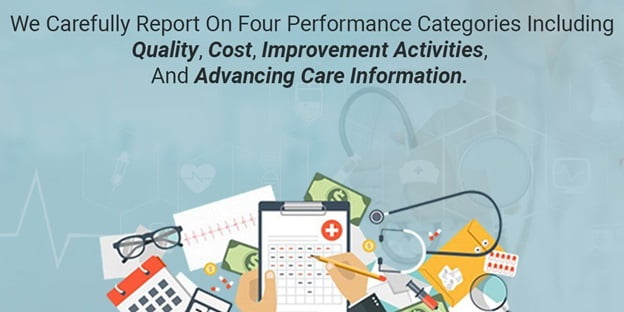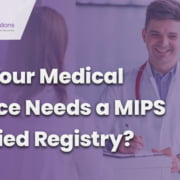How MIPS Can be an Acceptable Program For Clinicians?
The argument that CMS needs to improve MIPS is a thing of the past. Now, the focus is on how to devise ways that actually implement the change and stand true to its promise of a better healthcare system.
Let’s admit there is no standard way for any quality payment program to hit bull’s eye in its starting years. When a program is initiated and tested in a real-time environment, it gives insight on the actual performance and capability of the program; the same is the case with MIPS. Since, its first year in 2017, physicians are raising questions against the payment model.
Many leading healthcare organizations have proposed ideas that might help CMS to overcome MIPS related issues.
Reduce Un-Necessary Administrative Work
It is observed that there is a lot of administrative work associated with MIPS reporting. There is a lot of data that needs to be collected and managed to submit to CMS. One reason is the primary care and the value-based medical services that quality measures cover. This program can serve to be more physician-friendly if clinicians are not burdened with extensive administrative work.
MIPS solutions consist of elements from three major programs:
- Physician Quality Reporting System (PQRS)
- Value-Based Payment Modifier (VM)
- Meaningful Use (MU)
CMS is working in this context and simplifying this quality payment program with the easy amalgamation of all elements.
However, clinicians are not satisfied and still face administrative burdens while quality reporting. Most of the physicians have reservations regarding the relevance of MIPS quality measures to the program. Quality measures have been a special concern for surgeons because they have been evaluated on patient’s immunizations. This approach is particularly un-necessary for surgeons and reflects poorly on the intention.
The past president of The American Medical Association (AMA) David O. Barde, has provided a list of suggestions in this regard.
- Reduce the number of measures for which a physician can report.
- Re-expand the definition of a facility in MIPS reporting to include all healthcare service providers; no matter wherever they are, such as post-acute care centers.
- Set a 90-day performance period for all MIPS measures.
This way, physicians will be able to invest their energies in the right direction that is, on their patients.
Rethink and Modify Promoting Interoperability (PI) category for MIPS
Promoting Interoperability (formerly known as Advancing Care Information (ACI)) performance category tests physicians’ patience the most. Via this category, CMS has tried to encourage physicians to incorporate certified usage of EHR technology.
According to some physicians, this category focuses entirely on EHR technology, instead of actual advancement in the healthcare system. However, they need to shift their focus on the actual usage of technology and to translate digital health information on the patient level. Only this way, the PI category will stand true to its name.
The reporting requirements for this quality measure should also be modified to make this category more useful for physicians.
Here’s the good news, right from this year MIPS 2019, certain changes are observed for the PI category, which is expected to improve the overall performance of this category.
If physicians strive to score high in this category, they must take measures to perform well in the following sectors.
- E-Prescribing: Computerized generation, transmission, and filling out of medical prescription
- Secure health information exchange
- Giving easy access to patients to their healthcare information
- Public health and clinical data exchange: Exchanging data between different stakeholders/healthcare organizations.
Eligible clinicians don’t need to invest a fortune to excel in specific categories. But, a little improvement can add huge points to the MIPS total.
Make Use of the “Opt-In” Policy
MIPS has the potential to bring advancement in the healthcare industry. However, with the final rule of QPP for MIPS 2019 in motion, around 58% of the physicians are already excluded to even participate in it. But there is a new policy in town, making waves in the clinician fraternity, adopting which, those who are still outside the bounds of MACRA and MIPS will be able to participate.
According to CMS, the year holds comparatively doable reporting requirements as well in an effort to reduce physician burnout. By the introduction of the “Opt-In” policy, clinicians can now participate in the program and win rewards as if they were eligible for it.
Generally, the program shows some flexibility toward small medical practices with fewer resources by making their reporting requirements slightly easier than those of large practices. Hence, there is a good chance they get the most out of MIPS 2019. Moreover, it stirs the air in the US healthcare industry and encourages physicians to be promoters of value-based care.
As MIPS 2020 reporting has become a mandatory subject for physicians for the sake of quality care and low costs, patient portals are also an essential topic worth discussing, nowadays. We wrote an article to cover this topic for our audiences. If you want to read it, click over here: MIPS Quality Measures 2019 Vs. 2020 – Registry Investigates
















How can MIPS (Merit-Based Incentive Payment System) be considered an acceptable program for clinicians?